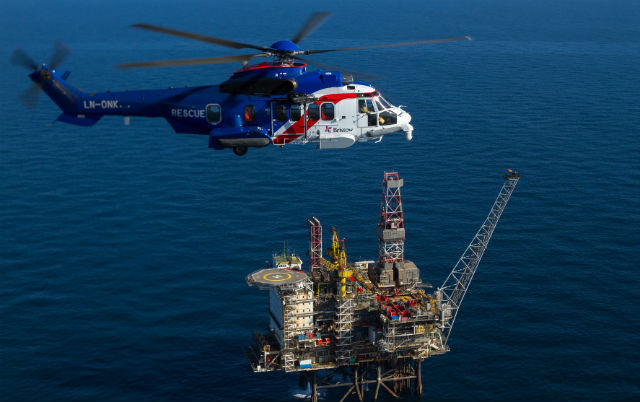Advances in safety reasoning related to offshore oil support helicopter operations are rapidly being consolidated into practical measures, according to the UK Civil Aviation Authority.
The agency has published an interim report assessing progress in its plan, launched in February 2014, to improve sector safety. The safety review was prompted, it says, by "five significant accidents between 2009 and 2013".
In the report, the CAA highlights the principal areas receiving attention: improving passengers' chance of escape and rescue in the event of ditching, reducing risks around helidecks, raising pilot training standards – especially for flight in instrument meteorological conditions, improving understanding of technical failures – especially in critical parts, and making technical failure alerts more reliable and effective.
The agency says: "Ten months on from the publication of our review, substantial progress has been made toward improvements in offshore helicopter safety.
“Today, flights no longer take place over the most extreme sea conditions. Every single passenger on an offshore helicopter is equipped with a new [and] improved emergency breathing system. Offshore workers have received new guidance and – crucially – improved safety training."
Safety culture has also changed, the CAA observes. "There is a strong collective commitment to change evidenced by the co-operation received from all of the parties represented in the newly formed Offshore Helicopter Safety Action Group, which is proving a catalyst for increased dialogue between helicopter operators, employee representatives, manufacturers and regulators."
One of the key findings of the CAA's review was that while helicopter operators all had their own safety management systems (SMS), there were differences in what these addressed. However, the CAA notes that operators had already recognised this issue before the publication of the review, and launched their own initiative – the Joint Operators’ Review – which aims to share safety data and identify and agree on best practices. This led to the establishment of Heli Offshore on 21 October 2014 – a safety organisation involving five of the world’s largest helicopter operators.

Airbus Helicopters
The new report also summarises the outcomes from a SMS symposium in Aberdeen last July, attended by the main UK offshore helicopter operators, the Helideck Certification Agency, the Belgian civil aviation authority and Danish transport authority Trafikstyrelsen. From this event emerged a "top 10" list of issues, including night operations to helidecks, operations to and from ship bow decks, a training and experience review, the influence of commercial pressures from the oil and gas industry, flightdeck automation, operation to unmanned decks, fatigue relating to flightcrew, engineering, ground operations staff and management, helideck standards – including obstacles, fuel storage and deck management, aircraft design and manufacturer support.
Until now, helidecks did not need to be certificated if they are offshore. The CAA says that will change this year, as will requirements for firefighting arrangements, especially at normally unmanned decks.
Also from the report, the CAA says crew operational decision-making and aircraft system design affect each other when false warnings occur. The authority says that although this does not happen often, a decision to ditch following an alert that turns out to be false is serious while in flight over the freezing waters of the North Sea. The CAA notes that anecdotal evidence on the frequency of false warnings is sufficient to cause crews to be sceptical of them, which creates a risk in its own right.
“Airbus Helicopters has stated its intention to hold a seminar for pilots as part of its established safety partnership with the helicopter operators," the report states. "We have reviewed the issue of crew response to engine fire warnings, and confirmed that helicopter operators and crews are aware of the false alerts.
“Helicopter operators have now changed procedures to ensure crews take a measured response to any warning – checking for confirmatory signs rather than immediately shutting down an engine.”
The CAA observes that some new models are also equipped with tail-mounted video cameras, which can aid confirmation.
Meanwhile, the CAA and manufacturers are working with EASA to develop new definitions on which helicopter parts are designated “critical”, with a view to enabling improvements in their manufacture, verification and monitoring. "While we recognise that recommendations with regard to airworthiness certification require broad consultation before being formally introduced, we believe that faster progress could be made – giving helicopter operators and manufacturers greater clarity and certainty about what is expected of them,” the CAA says.
Above all, the agency wants to see the recent remarkable momentum for change sustained, adding: “It is strongly intended that the momentum built over this year should continue. In particular, the working relationships established between helicopter operators, regulators and manufacturers should lead to further safety improvements and the embedding of a stronger safety culture across the offshore helicopter industry.
“In practice, this should lead to consistently high-quality maintenance processes, more rigorous and appropriate crew training and above all increased information flow from helicopter operators to manufacturers, so that issues encountered in flight can be addressed in production.”
Source: FlightGlobal.com
















